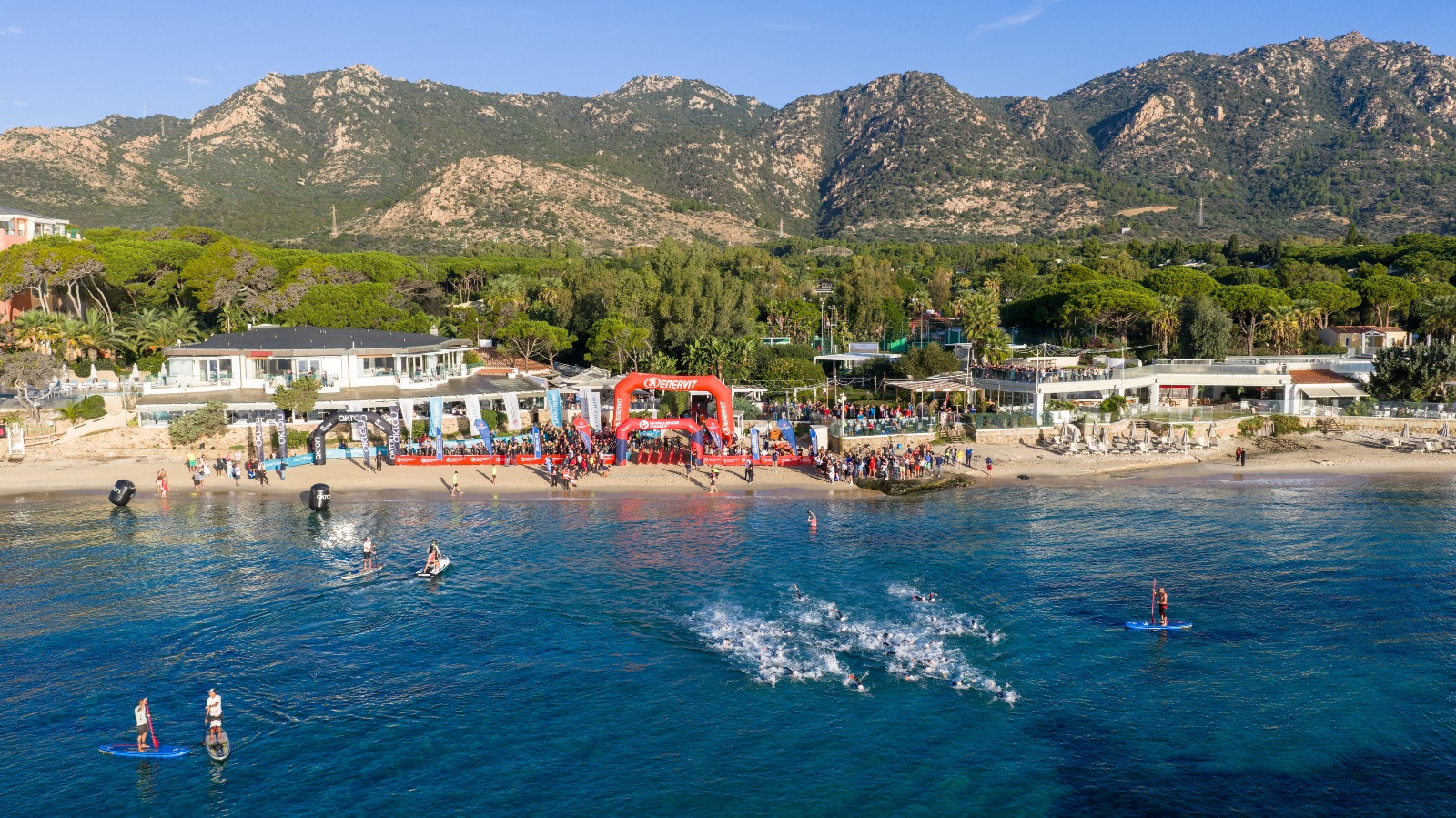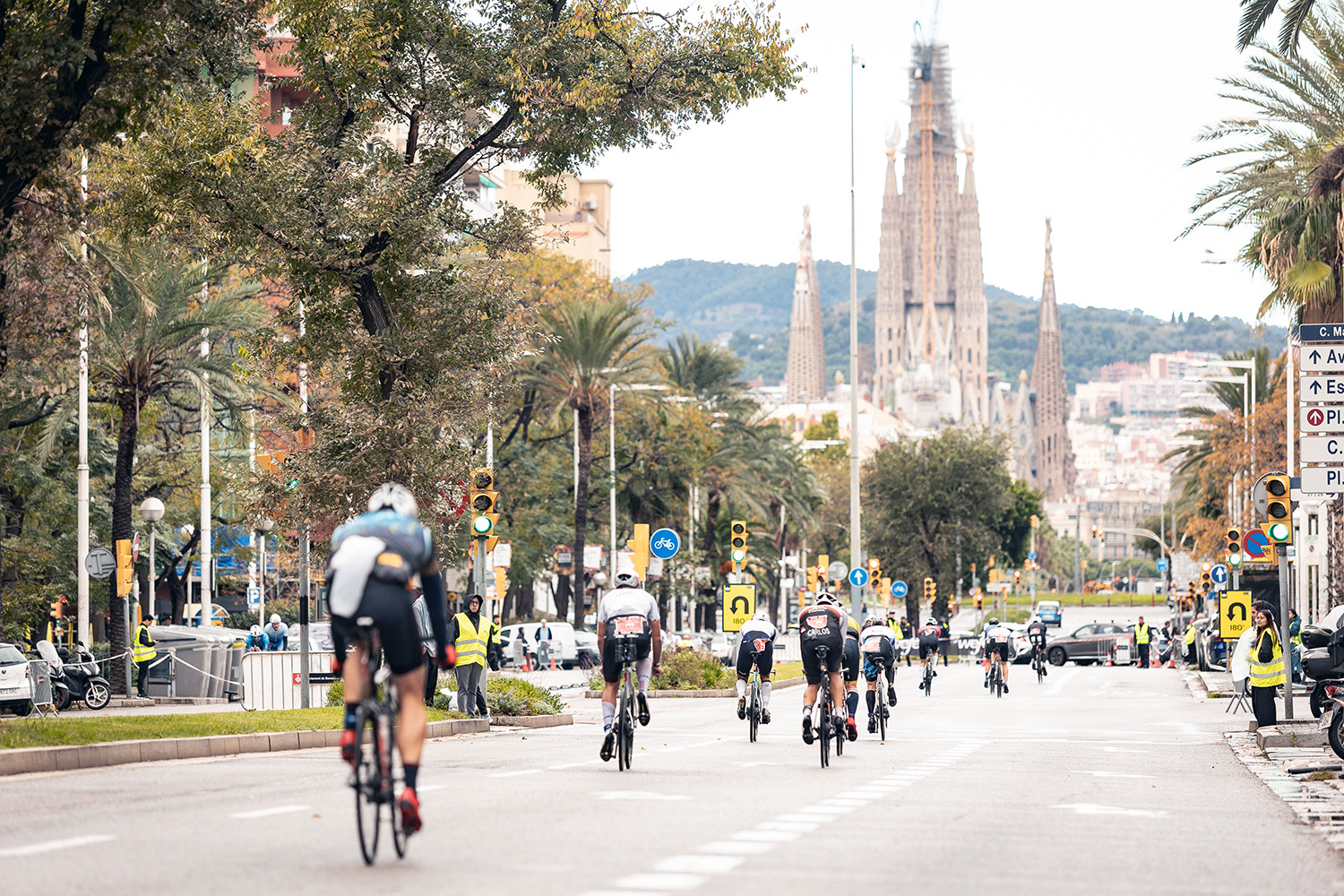If you don’t come from a strong swim background (this describes a lot of triathletes), open water can be pretty darn scary. Fortunately, the Quintana Roo Pro and Factory teams are full of strong swimmers, and if you hang out with them long enough, you can learn a thing or two about how they approach open water swims.
We asked Haley Chura, one of the fastest swimmers in triathlon, and Matt Hanson, our most seasoned and consistent pro, for their advice. These are their top 5 open water swim tips that will make swimming a much more enjoyable experience on race day.
1. Practice More, Practice Often, Practice With Purpose
This first tip is painfully obvious, but ultimately, practice is the key to success. If you’re like me, you might skip swim workouts more often than anything else, and you might go into a race having only done five swims in the lead-up. This is a bad habit that I (and I’m sure many others) am often guilty of. The big thing every pro, coach, and successful amateur on our team has emphasized is to get in the pool more often. Ideally, we should all be swimming at least 3 times a week.
These don’t all need to be long, grueling workouts. Shorter, focused swims are just as useful in the long run. If you’re time-crunched, knocking out regular short swims throughout the week is better than doing a single long swim session only occasionally. Getting a feel for the water consistently will improve your overall comfort with swimming, especially on race day.
Of course, this also means we need to practice more in open water (with a buddy!). Even if you just spend 10 minutes in open water, getting used to being out there and embracing it will greatly improve open water anxiety.
Matt Hanson, who has over a decade of experience in the pro ranks, gave us these tips for open water practice:
“Always have a purpose when you go in. Don’t just swim willy-nilly just to knock out the yards,” Hanson says. “You want to use the opportunity in the open water to practice sighting, to practice your turning, to practice trying to swim as straight as you can, or just get more comfortable in the water by practicing self-talk and what you need to do to calm down. Also, practice getting in and out of water on choppy days.”
2. Don’t Follow the Feet Blindly
Having a swimmer in front of you to draft off is great. You can settle into their pace, go on autopilot, and start thinking about T1. It can be calming… until you look up and realize you’ve followed the feet in front of you 75 yards off course! This can happen when you get caught up with the people around you. Drafting is good, but you also need to plan out your line, visualize it, and try to stick to it as closely as possible.
Haley Chura is one of the strongest swimmers in the pro field and says to rely on sighting and not other swimmers to stay on course:
“If the water is calm, I like to do ‘alligator eyes’ and just do quick glances to make sure of where I’m going,” Chura says. “Especially if it’s choppy, pull your head and chest right out of the water to make sure you’re on track… then get back to pacing those feet in front of you, provided they’re on the right heading. People love to follow feet, but you need to sight; you don’t want those feet to lead you off course.”
3. Remember to Relax and Breathe!
For many athletes, one of the toughest challenges on race day is dealing with nerves.
There’s nothing worse than starting a swim already tensed up. A piece of advice that pretty much every one of our Pros has mentioned is just to breathe! At the start of the race, it’s so easy to get so caught up in your own head that you forget to take a step back and breathe. It sounds simple, but focusing on relaxing your breathing can make a huge difference in your nerves.
I find huge relief through the “box breathing” method: breathe in for 4 seconds, hold for 4 seconds, breathe out for 4 seconds, hold for 4 seconds, repeat until calm… Entering the water feeling calm and collected makes a huge difference.
Matt Hanson incorporates breathing exercises with his pre-race activations and warm-up routine, but he mentioned another related tip: chat up the athletes around you! It doesn’t matter if you’ve known them for five seconds or five decades; we’re all triathletes, which makes it easy to relate to each other. Crack a joke (maybe ask if they’ve peed in their wetsuit yet!) because laughing will help you relax and ease the tension to make your swim that much better.
4. Choose Race-Day Goggles Wisely
“I always suggest people pay attention to where the sun is going to be when it comes up for race day,” Haley Chura says. “Certain races start in the dark, so you‘ll want lighter goggles. Know what goggles you’ll want for any specific race you’re doing.”
Things to consider are: Which side do you breathe to? If racing starts in the morning, will you be looking into the sun? Or does the swim start pre-dawn, in the dark, or on a cloudy morning?
It’s a good idea to take a range of goggles with you, from clear to tinted, to suit the conditions. You don’t want the sun to blind you every time you take a breath, or be unable to see if there’s low light.
5. Soak Your Wetsuit and Pin That Timing Chip On
If you’ve had your wetsuit stored away for the offseason, and really before any race, we always recommend pre-soaking the inside of the suit. The inner jersey material inside the suit becomes more flexible when it’s been wetted in the ocean, pool, or lake and dried overnight. But even right before a race, Haley Chura wets her suit for another reason: warmth.
“I always get it wet just before the race starts,” she says. “I’ve found that a small layer of water keeps you warm. So get in the water just before the race, or even bring a water bottle and pour a little water in there, to keep you warm.
When the race gives you a timing chip and strap, be sure to ask the volunteers for a safety pin (or bring one of your own) to pin the strap’s end to itself on your ankle on race morning. (Be careful not to poke yourself in the ankle in the process!)
Whether it’s due to a weak and worn-out Velcro closure, or an overzealous triathlete grabbing your ankle or the strap in the chaos of the opening yards of the swim, the straps can come loose, and your timing chip can end up at the bottom of the lake or ocean.
“I’ve lost [my timing chip] enough times that I always pin it up once it’s on,” Chura says. “Nothing like not having your splits after the race!”



